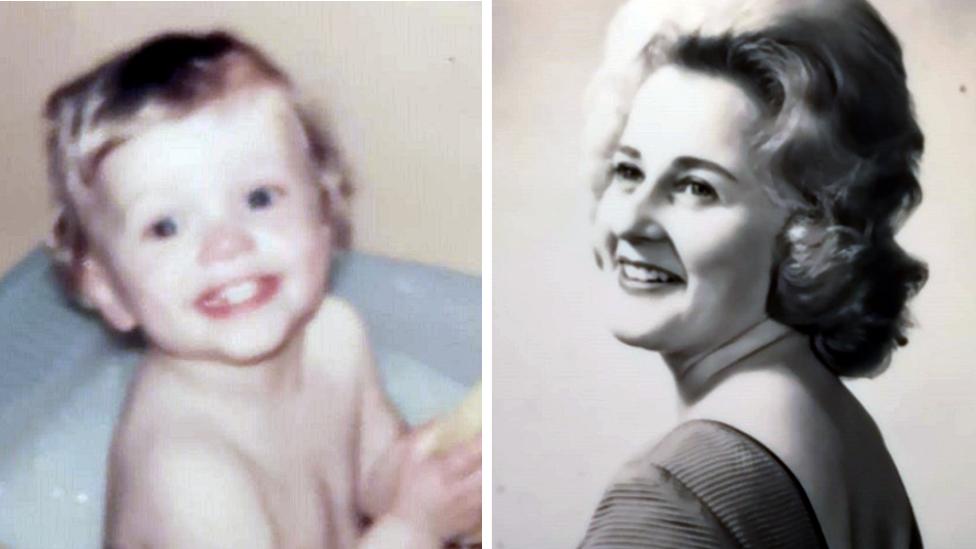The 46-year-old murder mystery that haunted the Highlands
- Published
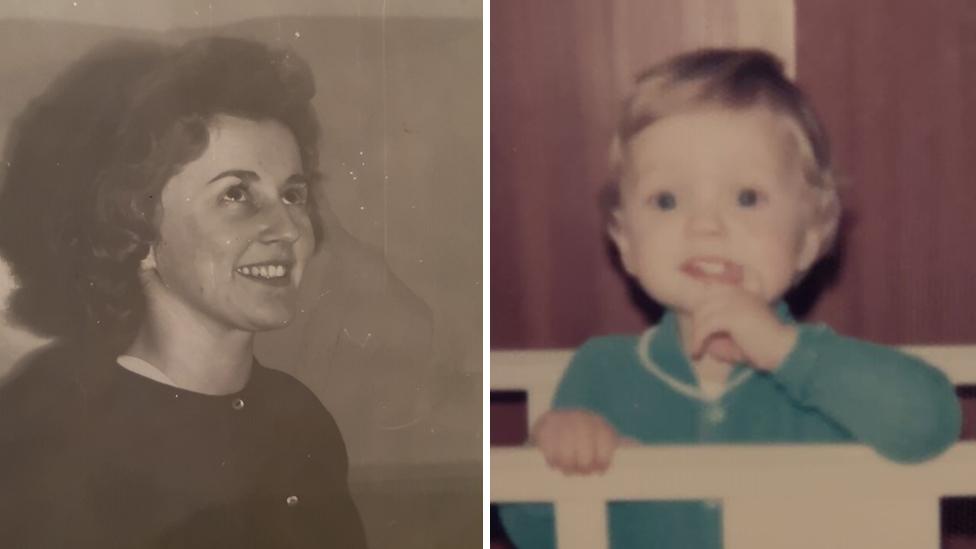
Renee and Andrew MacRae disappeared on 12 November 1976
On a November night 46 years ago, Renee MacRae's car was discovered burning in a Highlands lay-by.
A spot of blood, assumed to be Renee's, was found in the boot - but since then no other trace of the mum-of-two or her son Andrew, who was a passenger in the car, has ever been found.
The events of Friday 12 November 1976 have long haunted the Highlands.
Witnesses have told of hearing a blood-curdling scream in the dark and of seeing a man with wide, staring eyes pushing a children's buggy along the edge of the A9 in atrocious weather.
Now, after one of the UK's longest murder inquiries, her former lover William MacDowell - the father of three-year-old Andrew - has been found guilty of their murders and disposing of their bodies.
Renee, who was 36, had lived in the village of Beauly before moving to Inverness, about 15 miles away.
At the time of her disappearance, she was separated from her husband of 12 years, Gordon MacRae. He was a construction company boss and the father of her eldest boy, nine-year-old Gordon.
Renee had been in an affair for four years with MacDowell, a 34-year-old married man who was her husband's company secretary.
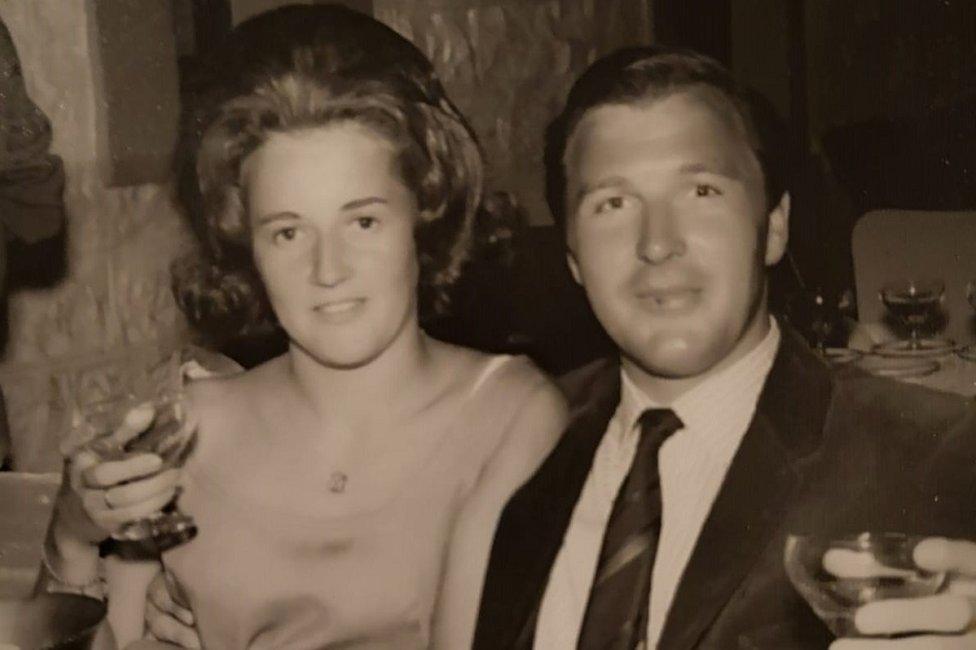
Renee and Gordon MacRae were married for 12 years and had a son, Gordon
In the days leading up to her disappearance, Renee had told friends she was going to meet MacDowell.
They were planning to spend the weekend together and, according to Renee's closest friend Valerie Steventon, MacDowell had asked that Andrew come along so he could get to know him better.
MacDowell would later tell police he never made their rendezvous, saying he had lied to Renee about taking the trip.
But for Renee there were bigger plans afoot. She was planning to move to Shetland with MacDowell and her boys, telling Valerie he had promised her a big house with a veranda.
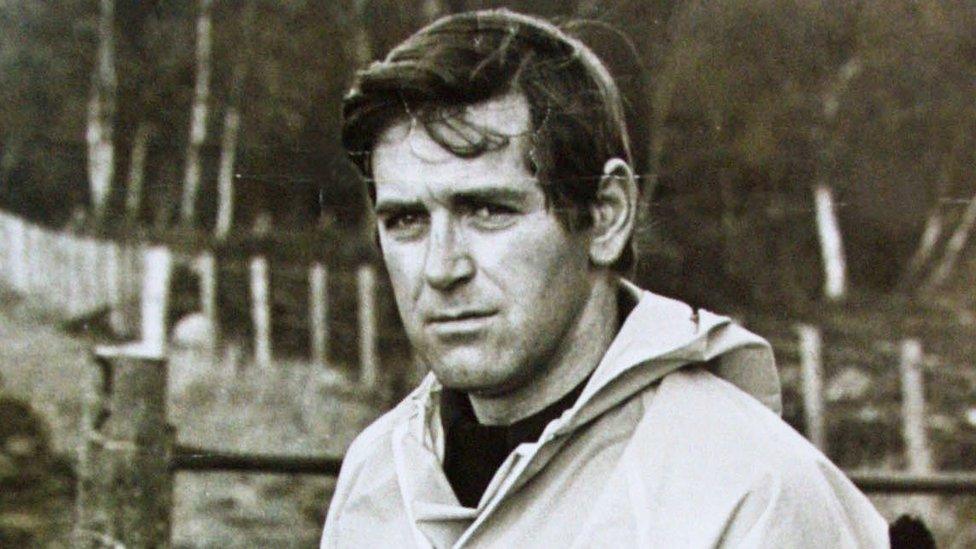
MacDowell, pictured in the 1970s, said he did not keep a meeting with Renee in November 1976
There were signs of the impending move found all through Renee's home in Inverness's Cradlehall area.
Ornaments were found wrapped in newspaper and packed into cardboard boxes. Andrew's winter clothes were laid neatly out on his bed, while his teddies were in a jumbled pile in the corner of his bedroom.
There were also poignant reminders of happy times in the bungalow, with cards from Andrew's recent birthday still standing on a windowsill.
MacDowell told police he had no intention of moving to Shetland.
On 12 November, Renee and Andrew left for their trip in her blue BMW. Gordon Jnr stayed in Inverness.
But at about 22:00 her car was spotted on fire at Dalmagarry, just south of Inverness, on a loop road that was being used as a lay-by during the construction of the new A9 trunk road. The drivers of a bus and a passing train were among those to see the flames.
The discovery would lead to one of the biggest police probes the Highlands has ever seen.
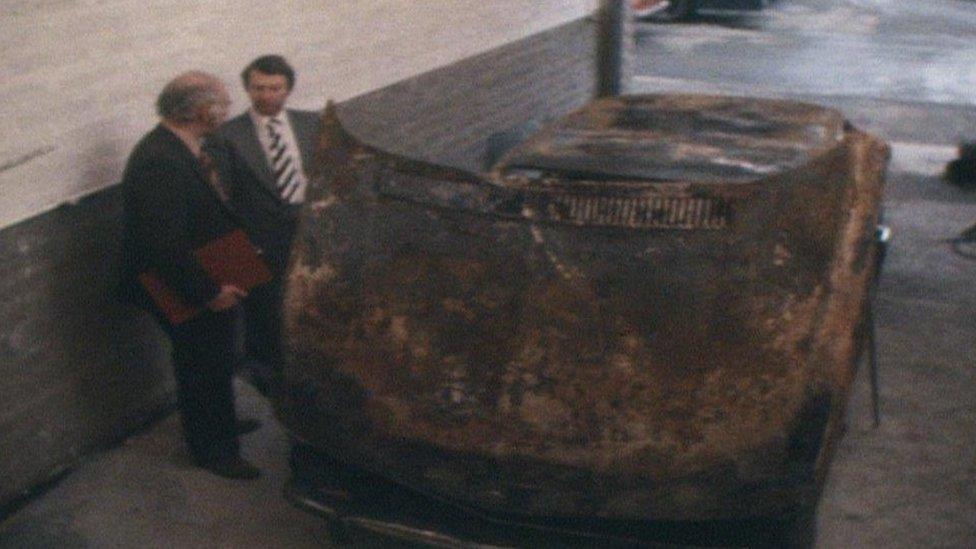
Renee MacRae's BMW car was found on fire in a lay-by south of Inverness
Police, who initially investigated the case as a missing persons inquiry, were faced with a huge challenge.
Stuart Lindsay, an Inverness-based journalist with The Herald, said: "The fact of the matter is whatever happened on the Friday night there was no pursuit begun until the Monday night.
"It being a filthy, wet weekend whatever evidence was there was well washed out - and somebody had 72 hours to do whatever they had to do. It was just bad luck."
Then there was the difficult terrain.
The lay-by where the burning car was found was set in a wide open landscape of moorland, hills, quarries, abandoned crofts, commercial forest plantations and lochs.
And a harsh Highland winter was looming on the horizon.
In the hours following the discovery of the BMW, details of Renee and MacDowell's affair came to light.
MacDowell lost his job at Gordon MacRae's firm over it, and police questioned him about the relationship.
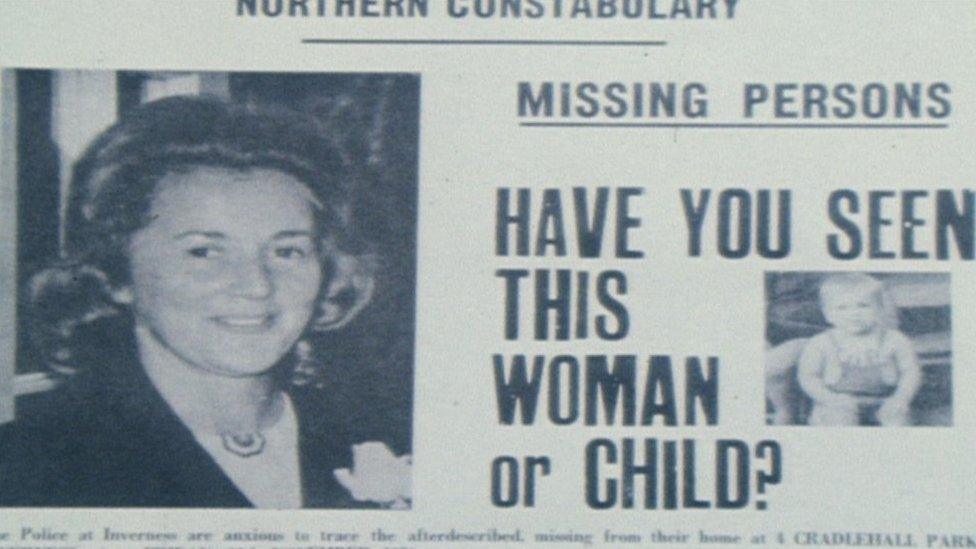
A newspaper appeal from the 1970s for Renee and Andrew MacRae
Over the course of eight weeks, 200 volunteers helped 100 police search an area covering 100 square miles
An RAF Canberra spy plane made sweeps of the moors with equipment capable of detecting the disturbed earth of hastily dug graves, the jet screeching across grey skies as teams searched below.
But no sign of Renee or Andrew was found. An investigating officer said it was almost as if they had vanished off the face of the earth.
Winter began to bite hard and the search was suspended until the following year due to heavy snow, with drifts 6ft deep.
Conditions were so bad even gamekeepers with long experiences of the tough conditions in the hills were forced to give up helping to look.

A team of Italian divers, in the Highlands to look for the Loch Ness Monster, helped police search a flooded quarry
Meanwhile, a taskforce of detectives continued to gather witness accounts.
The statements they gathered included one from Eva McQueen, who told of hearing a blood-curdling scream from outside her farmhouse.
At MacDowell's trial another witness - Nan MacDougall, now aged 90 - recounted how she saw a man with "wide and staring eyes" pushing a buggy as she travelled in a car up the A9.
The ground search resumed with a renewed vigour in the summer of 1977.
Police search dogs were brought in and officers agreed to check an area of a loch shore that a Swiss clairvoyant told them was the location of graves.
A quarry at Dalmagarry was also searched. A young policeman had reported an unusual smell at the site but funds to continue this search ran out before its source could be found.
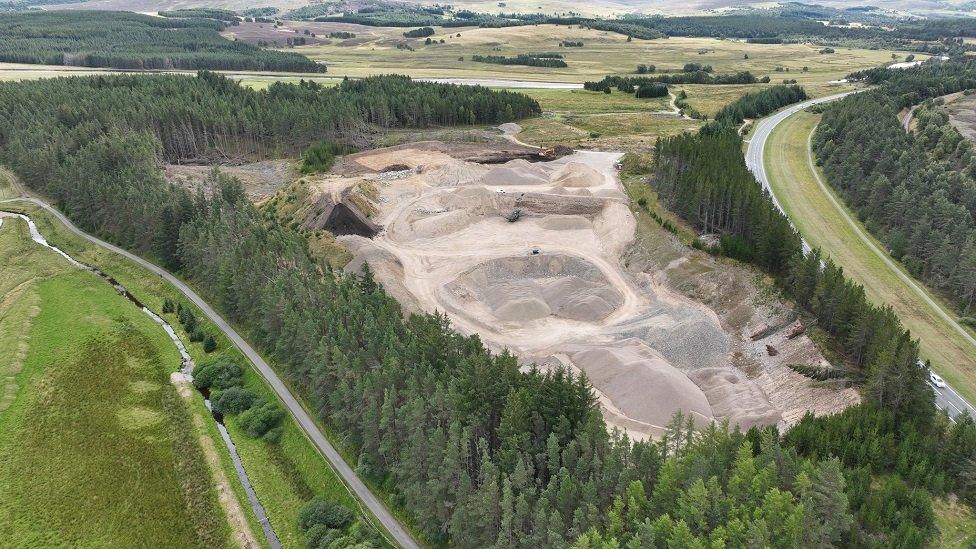
Dalmagarry Quarry as it is today
Abandoned and flooded Leanach quarry, a fly-tipping hotspot near Culloden Moor close to Inverness, was also searched by Italian divers who were in the area to hunt for the Loch Ness Monster.
They were praised by police for carrying out dangerous work in the dirty, rubbish-filled water.
Almost a year after Renee and Andrew disappeared, police had spoken to thousands of people.
But the investigation was also now being scaled back - from about 100 officers to a hand-picked team of 10.
Police chiefs promised the case would remain open until it was solved, and over the years there were periods of intense activity - including MacDowell and his wife Rosemary being interviewed by detectives in 1986.
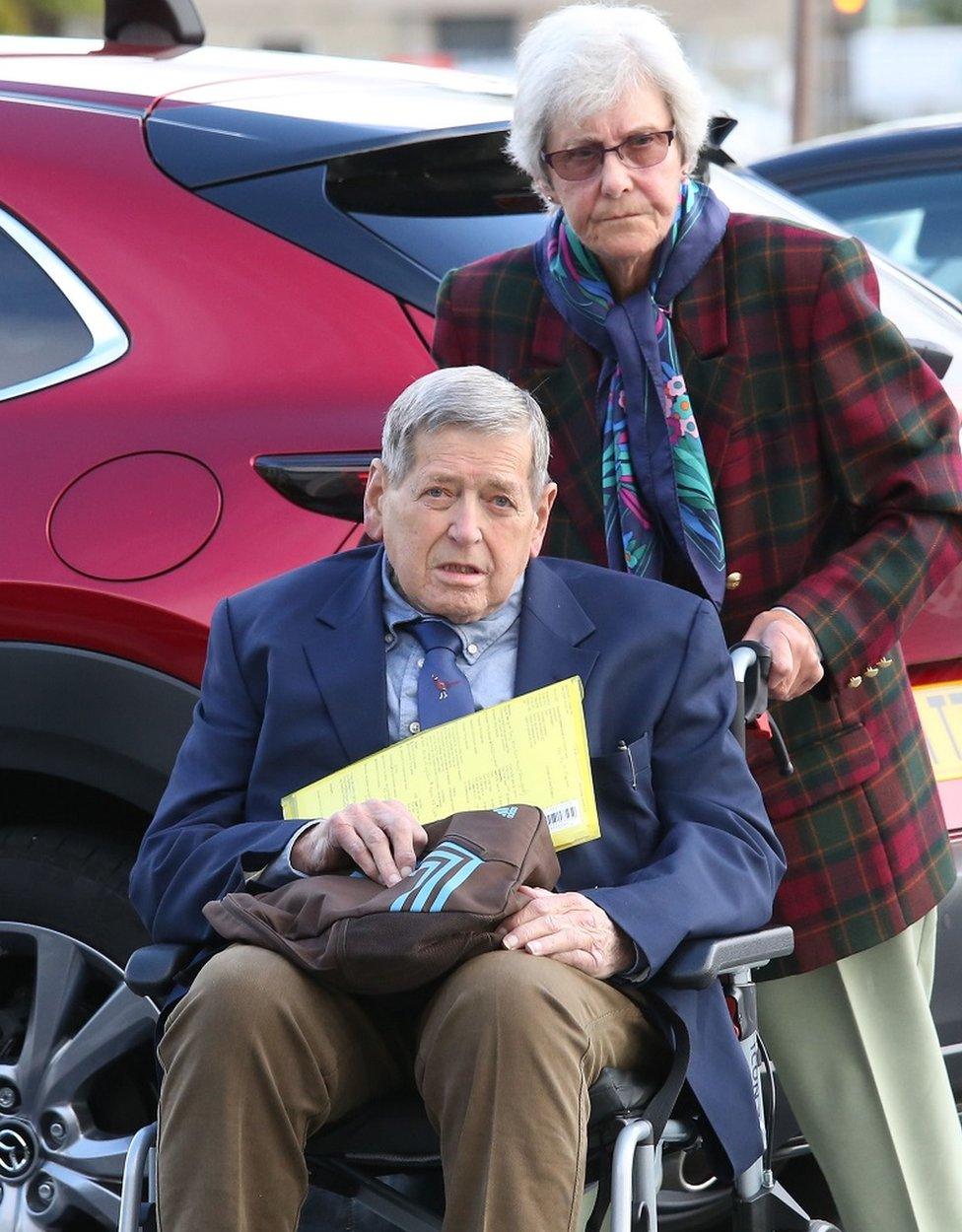
William and Rosemary MacDowell arriving at the High Court in Inverness

Police returned to Dalmagarry quarry in 2004 and over the course of three weeks had 35,0000 tonnes of earth and 2,000 trees excavated and removed at a cost of more than £100,000.
Forensic archaeologists and anthropologists were brought in to sift meticulously through the soil and debris.
But they found nothing but old crisp packets, some men's clothing and animal bones.
Two years later, police filed a report naming a suspect. It looked like the long unsolved murder had finally been cracked, but prosecutors decided there was insufficient evidence to take action.
It all went quiet again until a re-investigation was started in 2017. Decades of police records stored as microfiche were transcribed into three, hefty logbooks for detectives to painstakingly examine.
In October 2018, on what would have been Andrew's 45th birthday, police made a new appeal for help in solving the case and released an image of the type of pram his mum would push him around in.
The following year, police had Leanach quarry drained of an estimated 13 million litres of water and had more than 100,000 tonnes of earth, silt and other material removed. More than 50 vehicles were found dumped at the site.
Parts of a pram were also found in the quarry and sent for forensic tests.
Renee's sister Morag Govans spoke to the BBC in 2018
MacDowell was arrested in September 2019 and in a court appearance at Inverness in June 2021 he denied killing the mother and son.
In an interview with BBC Scotland in 2018, Renee's sister Morag Govans spoke of her hope that the bodies of her sister and nephew might be found.
"I hope that we finally do get an answer," she said.
"I cling to the hope we will find their remains one day and we will get justice for them."
MacDowell has now been found guilty of their murder. His wife described him as "a walking dead man" due to his health problems, and he faces spending the remainder of his life in jail.
But despite the verdict, there is still no answer to the questions about how Renee and Andrew died - and whether their bodies will ever be found.
Det Ch Insp Brian Geddes, who led the re-investigation in 2018, said the case would remain open until their remains were found.
He said: "I would appeal directly to William MacDowell to speak to us and allow us to bring closure to the family."
- Published29 September 2022
